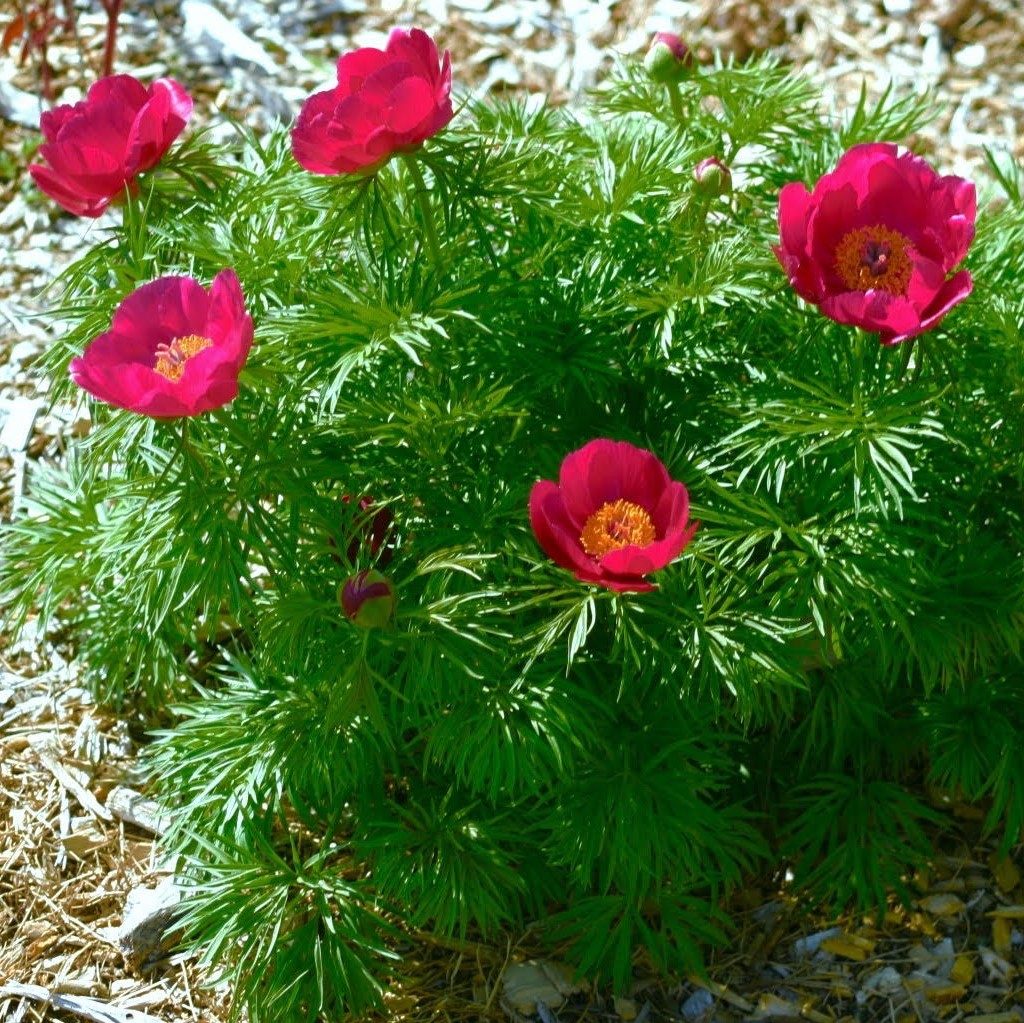
Fernleaf peony (Paeonia tenuifolia), sometimes called “fennel peony”, is recognized principally for its finely dissected foliage. When properly sited and cared for, it is a low maintenance perennial. This uniquely different peony is native in parts of Eastern Europe (USDA hardiness zones 4 – 8).
Peonies perform best in well-drained, evenly moist, compost rich soil with a pH near neutral. Plants usually fail in clay soil unless it has been generously amended with compost. Plants become drought-tolerant after one year in the garden. Site fern leaf peonies in full to partial sunlight and in average to moist soil that is well-drained. Never allowed plants to dry out and avoid dry windy sites.
Fernleaf peonies are treasured by peony connoisseurs and rare plant collectors. Leaves are susceptible to leaf spot and mildew diseases. Do not overhead irrigate fern leaf types to prevent foliar disease outbreaks. Deer generally leave peonies alone. They’re tolerant of urban air pollution. Plants are propagated by division.
At the start plant growth may be slow, but fernleaf peonies are long-lived, some over 25 years when properly sited and annually cared for. Set the thick fleshy roots below the soil with the buds (eyes) 1.5 to 2 inches below soil level. Plants barely stand 18 to 24 inches tall and 24 inches wide. The 2 1/2- to 3-inch, bright red flowers bloom in late summer have very short stems and they appear to sit directly on the foliage.
In southern climes (GA, FL, AL, MS), protect their delicate finely cut foliage from drying afternoon sun and from high winds. Floral stalks may be weak if planted in excessively rich soil or too much shade. Some may require caging or staking soon after shoots emerge in spring. Fernleaf peonies tend to go dormant in mid-summer.
Water fernleaf peonies often enough to keep the soil moderately moist. Feed fern leaf peonies with a mixture of bone meal and either compost or well-rotted manure in early fall before the foliage fades. If you opt to use a commercial fertilizer, choose one with a lower percentage of nitrogen (N) than phosphorous (P), and potassium (K) or a 1:2:1 ratio. High levels of nitrogen lead to fewer flowers.
Double Fernleaf (‘Rubra Plena’) peony features bold lightly-scented dark red flowers at the ends of the stems from late spring to early summer. Flowers are suitable for cutting.
Fernleaf peonies are more expensive that most herbaceous types. Plants are available from online nurseries and specialty peony nurseries.

 Posted in
Posted in 

thank you for the information